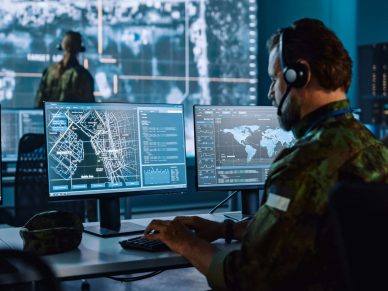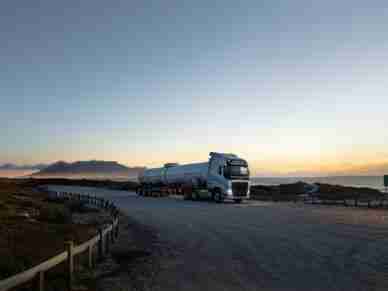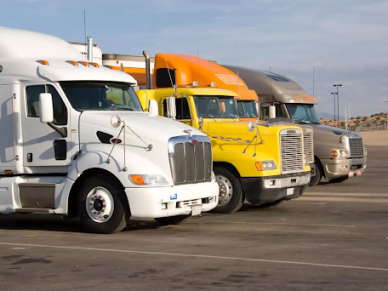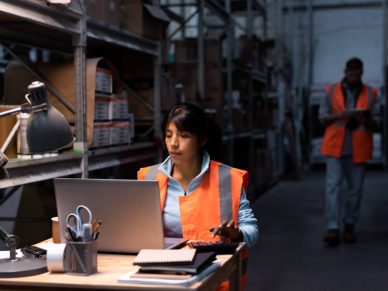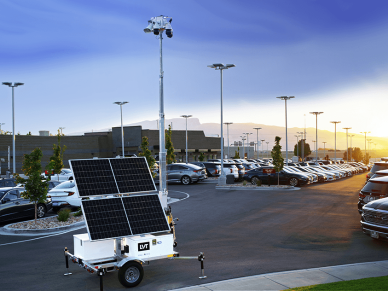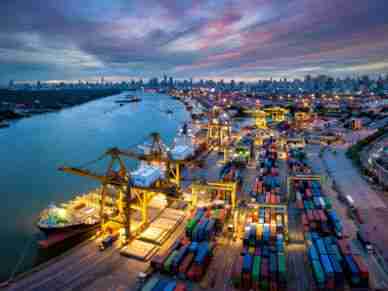View This Article in BOSS Magazine
A special look behind the scenes of FEMA
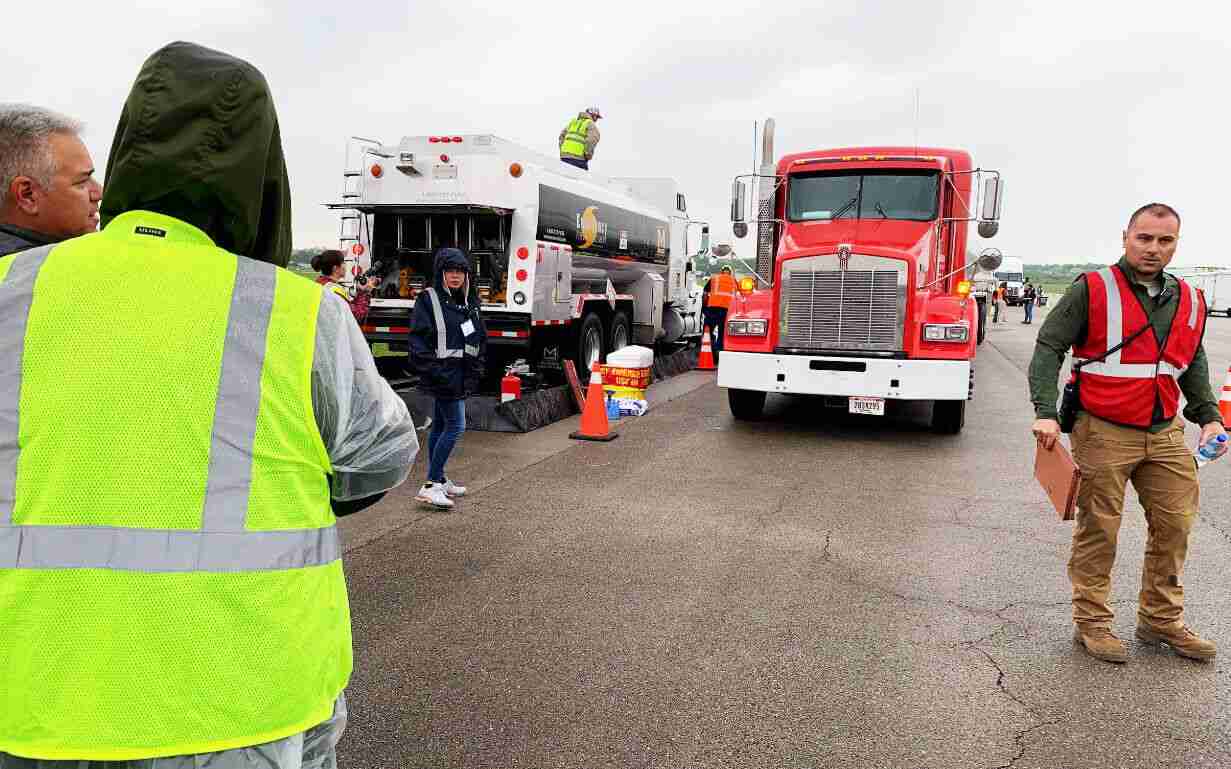
In late August 2005, a 17-year-old senior at Xavier High School in Middletown, Conn., watched the costliest disaster in U.S. history ravage the Gulf Coast. He’d never been to Louisiana, wasn’t sure if he could find it on a map or even spell it, but as he watched Hurricane Katrina and its devastating aftermath with an agonizing nation he could plainly see how logistically difficult it was to get help and supplies to people in desperate need.
He bet his friends that he could do a better job at coordinating help than what he’d seen on the news. While he had no concept of the policy constraints, political factors, and legal challenges associated with his aspiration, he was sure it couldn’t be that hard to, as he put it, “get a whole bunch of trucks to a building for people who need help.”
Today, as Chief of Supply Chain for the Federal Emergency Management Agency (FEMA), Joe Dellamura can collect on that wager several times over.
With an acquisition ceiling of over $3 billion, FEMA’s disaster supply chain is the third largest supply chain in the federal government behind the Department of Defense and the Department of Veterans Affairs. “This equates to 21 indefinite delivery, indefinite quantity, IDIQ contracts, and three interagency agreements with other federal agencies,” he said. That's 15 different commodity classes: everything from food to fuel and a multitude of services such as disposal, destruction, commodity inspections, and more. FEMA works with organizations such as DARPA, DoD, the U.S. Army, the EPA, and many others.
Dellamura’s life of public service began at 18 when he joined the Volunteer Fire Department in his hometown of Hamden, Conn. While studying law at Roger Williams University he worked as an EMT at night and liked that work so much that he switched out of law and into medicine while working full-time as an EMT and volunteer fireman.
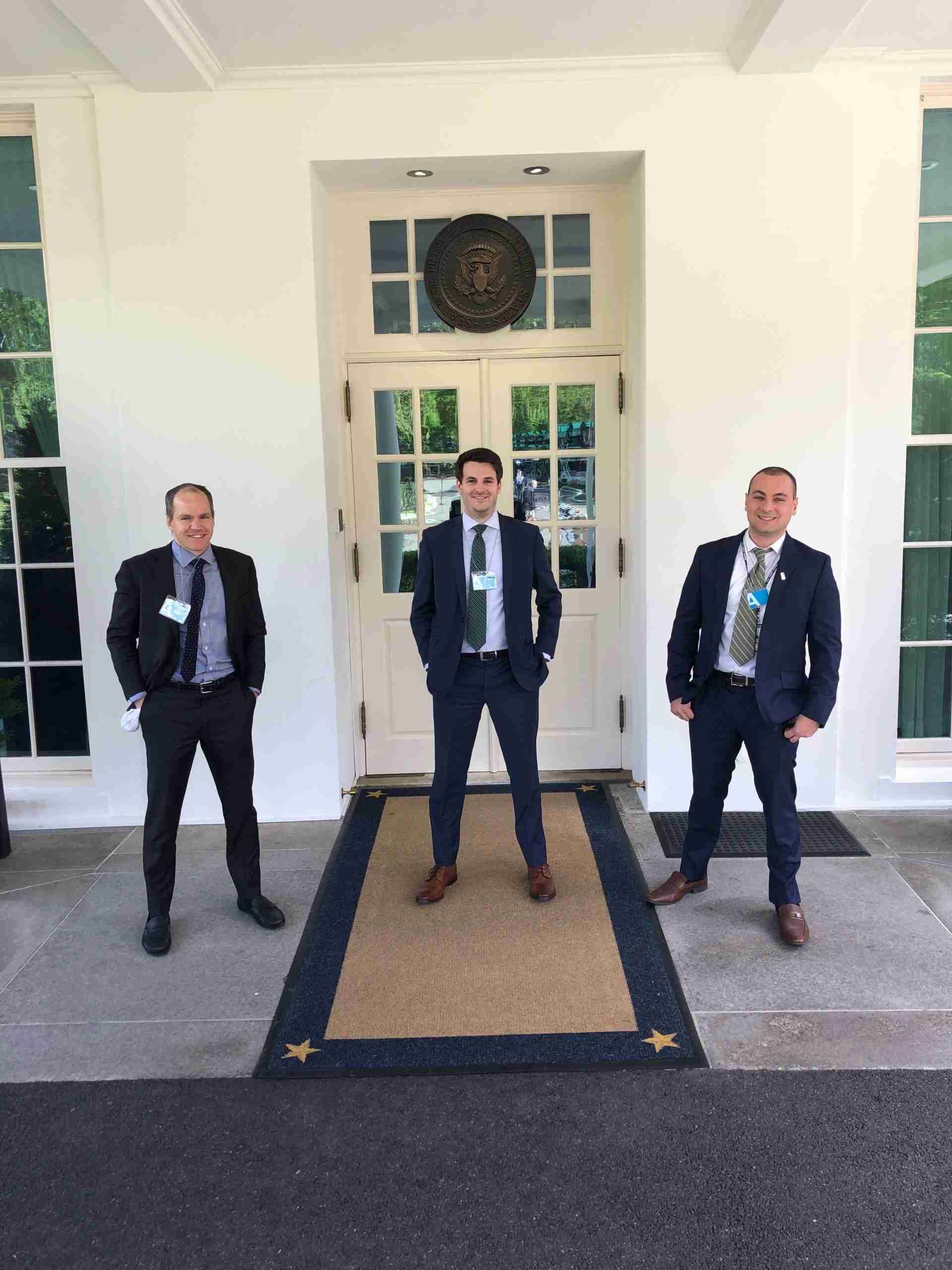
In 2010 he was accepted to the Boston University School of Medicine – where he learned that science wasn’t one of his strengths. “I was financing it myself. I didn't want to throw away all that hard work, so I went to the faculty advisor and said, ‘I'm real bad at science.’ He laughed at me because he thought I was kidding.” He switched to the B.U. master’s program in public health with a concentration in Emergency Management.
Six weeks after he graduated he was back as a full-time EMT in Bridgeport, he was deployed to New York City as part of the national response to Hurricane Sandy. Once again, Dellamura was in the improbable right place at the right time.
“So, 350 paramedics and firefighters are marshaled at Fort Dix in New Jersey waiting for Hurricane Sandy to blow ashore,” he said. “FEMA gets up on the makeshift stage and asks, ‘Does anyone here know anything about the incident command system?’ I’m a 24-year-old ambulance driver just happy to be there, thinking this is cool. I'm going to keep my mouth shut. The guy next to me raises his hand and says, ‘Yeah, this guy just got a master's degree in it.’ I was so angry at that guy – and it turned out to be the best thing that could have ever happened to me.”
Within about three days he was assigned to the incident command cell for Sandy. “At 24 years old, I’m overseeing search and rescue for the largest city in the country,” he said. After six weeks of living in the back of an ambulance parked in Brooklyn, he went back to Connecticut; just two weeks later he was assigned to the Sandy Hook Elementary School tragedy. The horror of that experience led him to reconsider his line of work.
The 2013 Sandy Recovery Improvement Act required FEMA to hire full-time incident management personnel, a role that Dellamura had filled in his previous job. “They posted 90 positions. I applied to 87 of them. I wanted to do it so badly,” he recalled. The applications paid off and he was hired as a logistics branch director, but after attending training for the role he realized that he was just going to be “the supply guy.”

For someone whose dream job was to “jump out of helicopters and save babies and all that,” Dellamura was deeply disappointed – until he realized that, in his words, everybody wants to be your friend when you're the guy with the stuff. “Ten years later, 96 declared emergencies and disasters later, I was running FEMA’s supply chain and could collect my $10 bet from my high school friends,” he marveled.
Innovation Matters
Dellamura developed a drive-through point of distribution program to provide commodities to communities impacted by disaster that FEMA adapted for drive-up test sites that would prove to be especially invaluable in the early days of the pandemic. “Because that project had a similar physical layout to a drive-through community-based testing site, they thought I would be the best candidate to oversee the logistics side of that, and I needed a real crash course in diagnostic testing and all that I didn't know anything about. I knew how to set up the cones,” he chuckled.

As logistics section chief on the White House Task Force for coronavirus testing, his aegis included planning and ordering all of the testing supplies and PPE needed to execute one of those sites. That morphed into supplying the entire country with COVID-19 tests. “I learned more about medicine, medical supply chain, and more about pharmaceuticals than I ever thought I would know,” he said.
When the distribution program for the COVID test rolled out in March 2020, COVID test manufacturers were distributing roughly 230,000 per month in the U.S. By May, FEMA was distributing 14 million, a 60x increase. From April to June 2020, FEMA accounted for 100% of the COVID tests distributed in this country.
“We did it because we had the best contracting team, the best contractors, and the best industry folks in the world that were ready to roger up and help. They didn't care about making money or their bottom lines. They cared about making sure Americans didn't have coronavirus,” he said. FEMA sought other innovations as well, such as hiring food companies to make and bottle viral transport media. “Our vendors and partners are the lifeblood of our supply chain. We quite simply couldn't do anything without them.”
Innovation is one of FEMA’s hallmarks. While researching alternatives to using bottle or bulk water deliveries on the battlefield, DoD research found that 12% of all Marine Corps fatalities during Operation Enduring Freedom and Operation Iraqi Freedom were a result of enemy attacks during water and fuel delivery. This led to the reconsideration of ways to relieve the supply chain from the point of distribution where forces are no longer tied to a water source or a sustainment network.
“Imagine that tactical advantage you might have over your enemy when you don't need to be tied to areas where specific geographic features such as water or root networks exist. The DoD thought this might work for FEMA,” he said. “We applied some of those findings to emergency disaster management: How can we free our sustainment capabilities from the bottled water supply chain if we're no longer tethered to an area that's accessible by road? Imagine how much better we would be at supplying isolated communities during a disaster.”
Dellamura and his teams are leveraging research conducted by the Department of Defense to explore the future possibilities of generating fresh water by either making the water on site or tapping into other water sources, eliminating the need for extensive transportation and supply chain efforts.

The process, atmospheric water extraction, functions similarly to a standard home humidifier that pulls water directly from the air. It is low power technology that extracts water in a purified or distilled form that's ready to be consumed. In a standard humidifier, the absorbed material collects at 45% relative humidity. AWE works at 10%, enabling water to be pulled from dry air. Still in the exploratory phase, the approach could have far-reaching impacts in areas prone to drought or wildfires.
“I love to brag on my vendors,” he enthused. “Our vendors and partners are the lifeblood of our supply chain. We quite simply couldn't do it without them.”
“FEMA is put in the middle of a lot of that, and we keep coming out on top because the men and women that work here are very dedicated and very passionate. I’ve got the best team in the world that does what they do. I couldn't be more proud of them because that's a great personal sacrifice,” he asserted.
“We work a lot of hours and we do it because we can actually see a positive impact in the lives of the people that get our services. It's the worst day of your life. You need a hot meal. These are the simple things that nobody thought about because no one thought their house was going to blow away in a tornado. We’re the folks that will think of that stuff.”
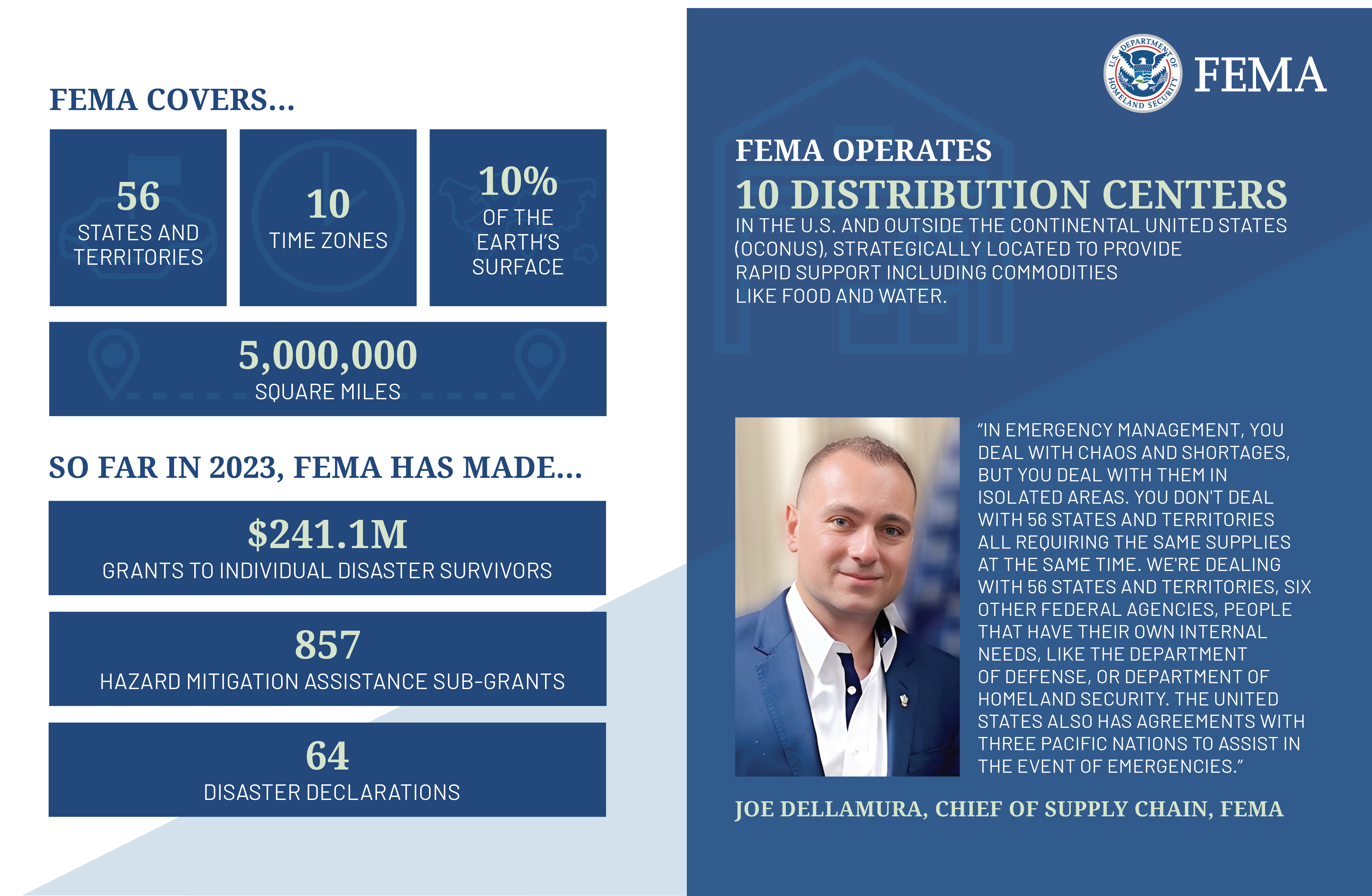
When disaster strikes, America looks to FEMA to support survivors and first responders in communities all across the country. FEMA fosters innovation, rewards performance and creativity, and provides challenges on a routine basis with a well-skilled, knowledgeable, and high performance workforce. Join our mission to support Americans when they need you most!
Corporate Office
500 C Street, NW
Washington, DC 20472
Homepage Link: http://www.fema.gov
LinkedIn: https://www.linkedin.com/company/fema/about/

